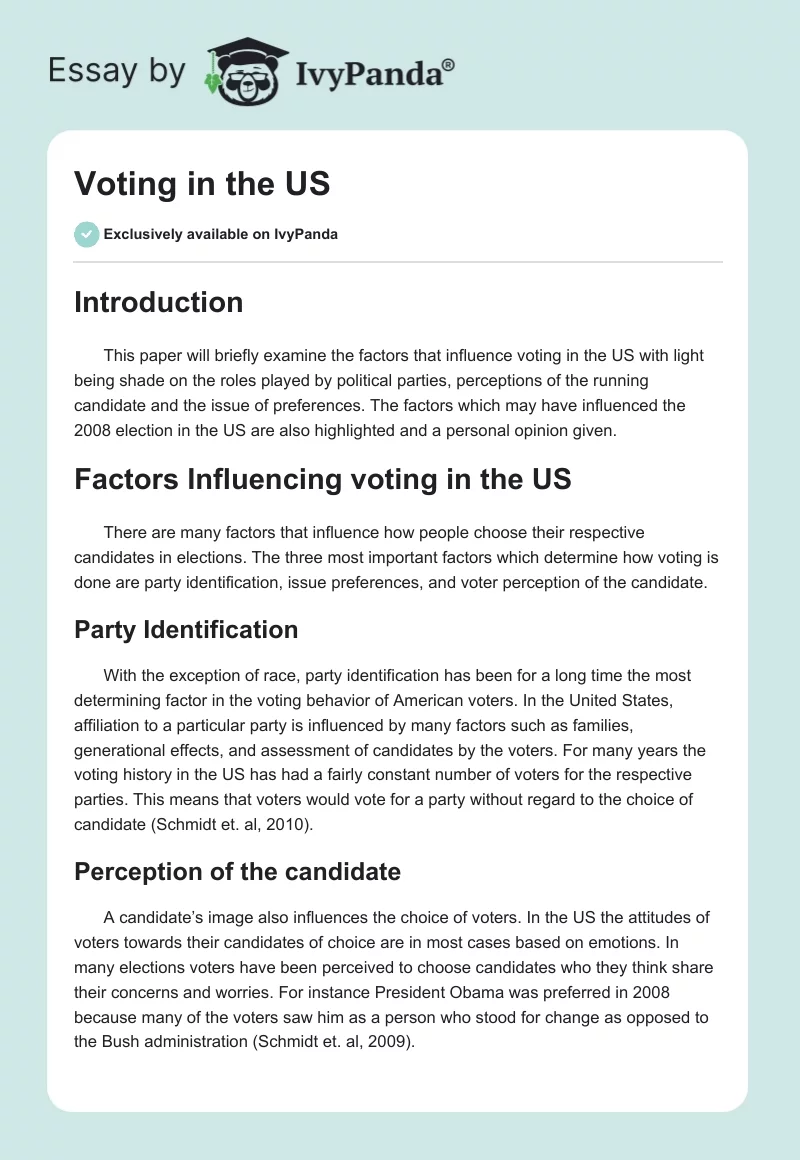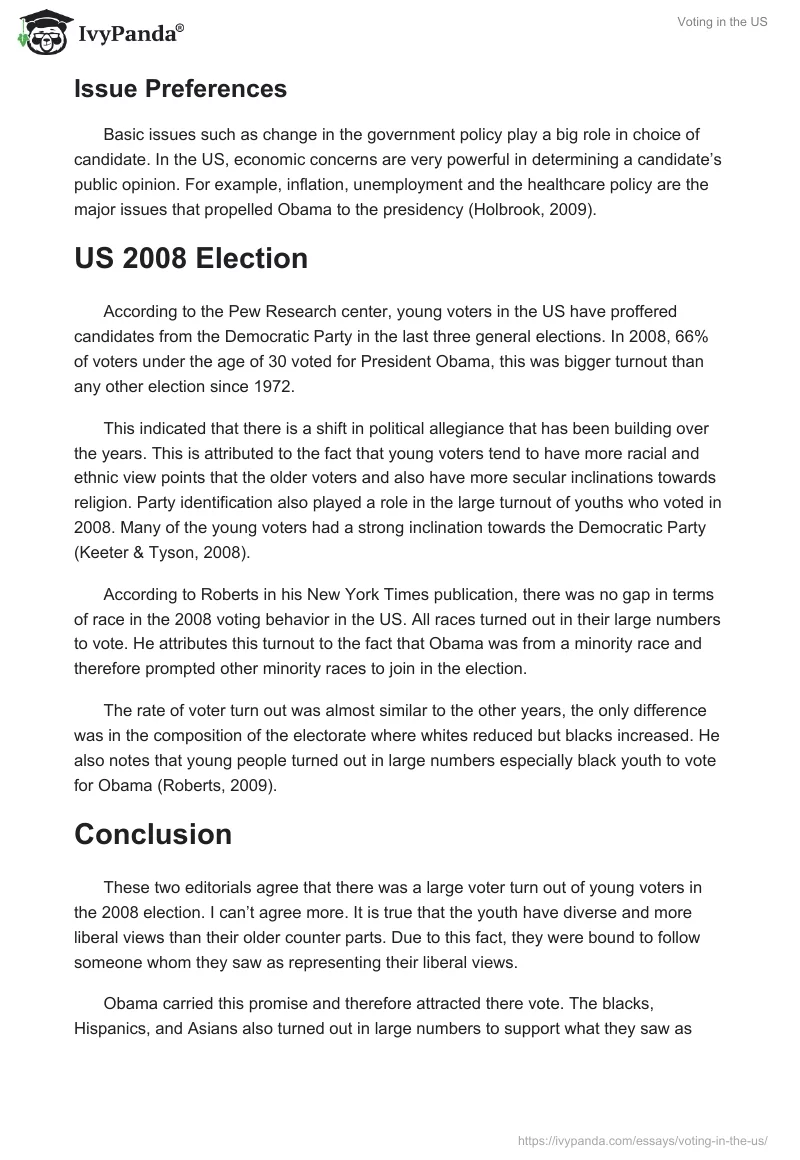Introduction
This paper will briefly examine the factors that influence voting in the US with light being shade on the roles played by political parties, perceptions of the running candidate and the issue of preferences. The factors which may have influenced the 2008 election in the US are also highlighted and a personal opinion given.
Factors Influencing voting in the US
There are many factors that influence how people choose their respective candidates in elections. The three most important factors which determine how voting is done are party identification, issue preferences, and voter perception of the candidate.
Party Identification
With the exception of race, party identification has been for a long time the most determining factor in the voting behavior of American voters. In the United States, affiliation to a particular party is influenced by many factors such as families, generational effects, and assessment of candidates by the voters. For many years the voting history in the US has had a fairly constant number of voters for the respective parties. This means that voters would vote for a party without regard to the choice of candidate (Schmidt et. al, 2010).
Perception of the candidate
A candidate’s image also influences the choice of voters. In the US the attitudes of voters towards their candidates of choice are in most cases based on emotions. In many elections voters have been perceived to choose candidates who they think share their concerns and worries. For instance President Obama was preferred in 2008 because many of the voters saw him as a person who stood for change as opposed to the Bush administration (Schmidt et. al, 2009).
Issue Preferences
Basic issues such as change in the government policy play a big role in choice of candidate. In the US, economic concerns are very powerful in determining a candidate’s public opinion. For example, inflation, unemployment and the healthcare policy are the major issues that propelled Obama to the presidency (Holbrook, 2009).
US 2008 Election
According to the Pew Research center, young voters in the US have proffered candidates from the Democratic Party in the last three general elections. In 2008, 66% of voters under the age of 30 voted for President Obama, this was bigger turnout than any other election since 1972.
This indicated that there is a shift in political allegiance that has been building over the years. This is attributed to the fact that young voters tend to have more racial and ethnic view points that the older voters and also have more secular inclinations towards religion. Party identification also played a role in the large turnout of youths who voted in 2008. Many of the young voters had a strong inclination towards the Democratic Party (Keeter & Tyson, 2008).
According to Roberts in his New York Times publication, there was no gap in terms of race in the 2008 voting behavior in the US. All races turned out in their large numbers to vote. He attributes this turnout to the fact that Obama was from a minority race and therefore prompted other minority races to join in the election.
The rate of voter turn out was almost similar to the other years, the only difference was in the composition of the electorate where whites reduced but blacks increased. He also notes that young people turned out in large numbers especially black youth to vote for Obama (Roberts, 2009).
Conclusion
These two editorials agree that there was a large voter turn out of young voters in the 2008 election. I can’t agree more. It is true that the youth have diverse and more liberal views than their older counter parts. Due to this fact, they were bound to follow someone whom they saw as representing their liberal views.
Obama carried this promise and therefore attracted there vote. The blacks, Hispanics, and Asians also turned out in large numbers to support what they saw as their fellow minority member who carried the promise of representing their political issues.
References
Holbrook, T. (2009). Economic considerations and the 2008 presidential election. University of Wisconsin. Web.
Keeter, S. & Tyson, A. (2008). Young Voters in the 2008 Election. Pew ResearchCentre Publication. Web.
Roberts, S. (2009). No Racial Gap Seen in ’08 Vote Turnout. The New York Times. Web.
Schmidt et. al. (2009). American Government and Politics Today. New York, NY: Cengage learning.


